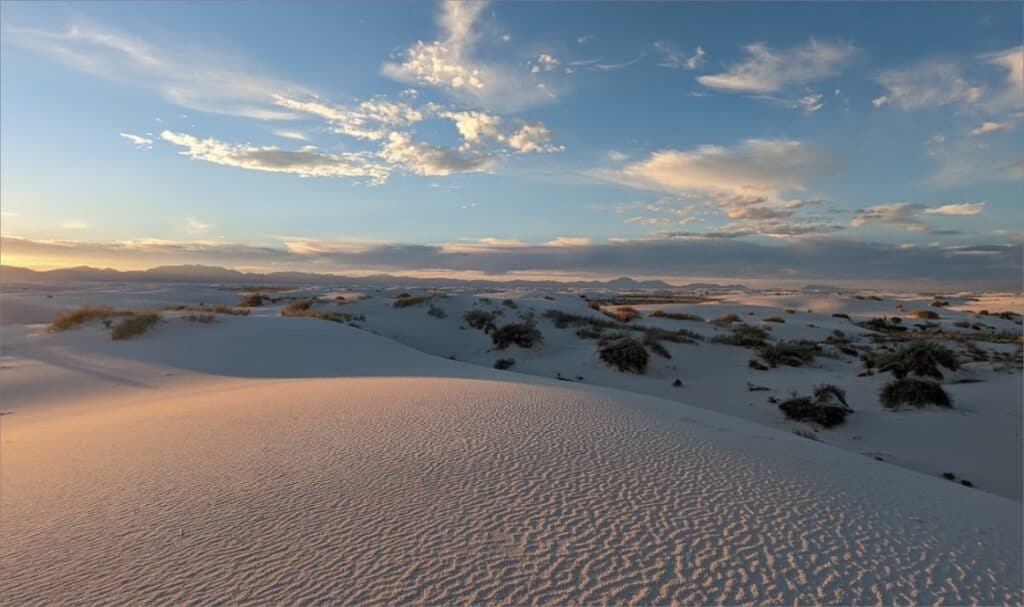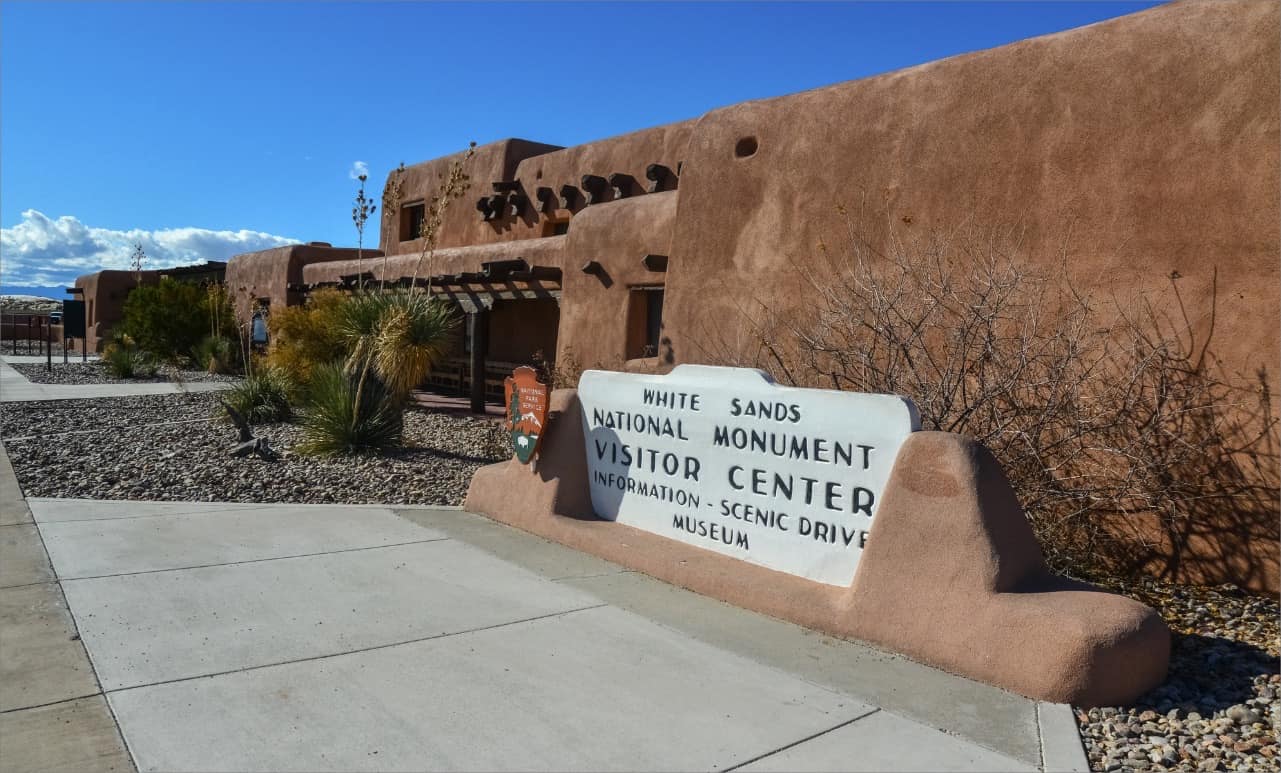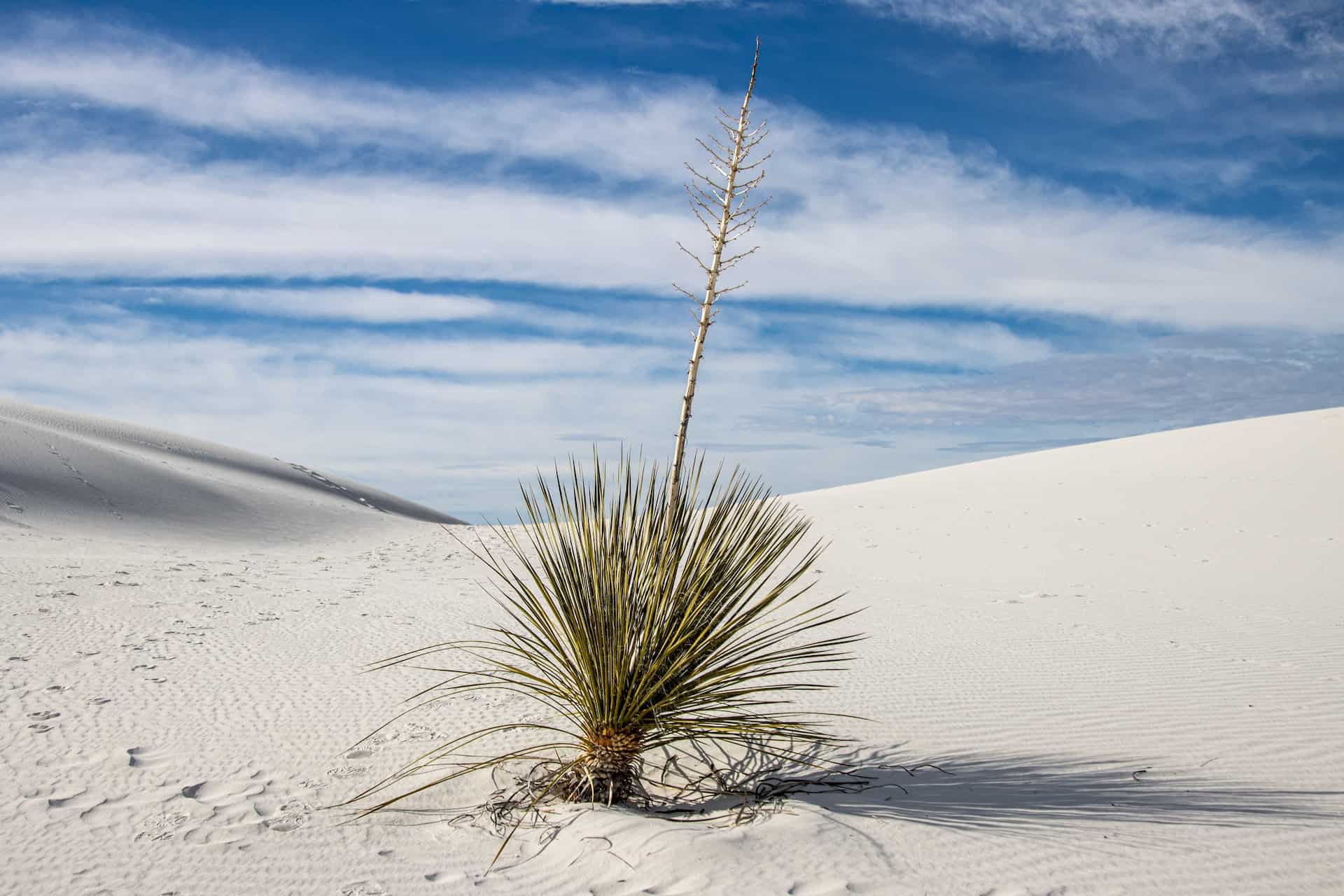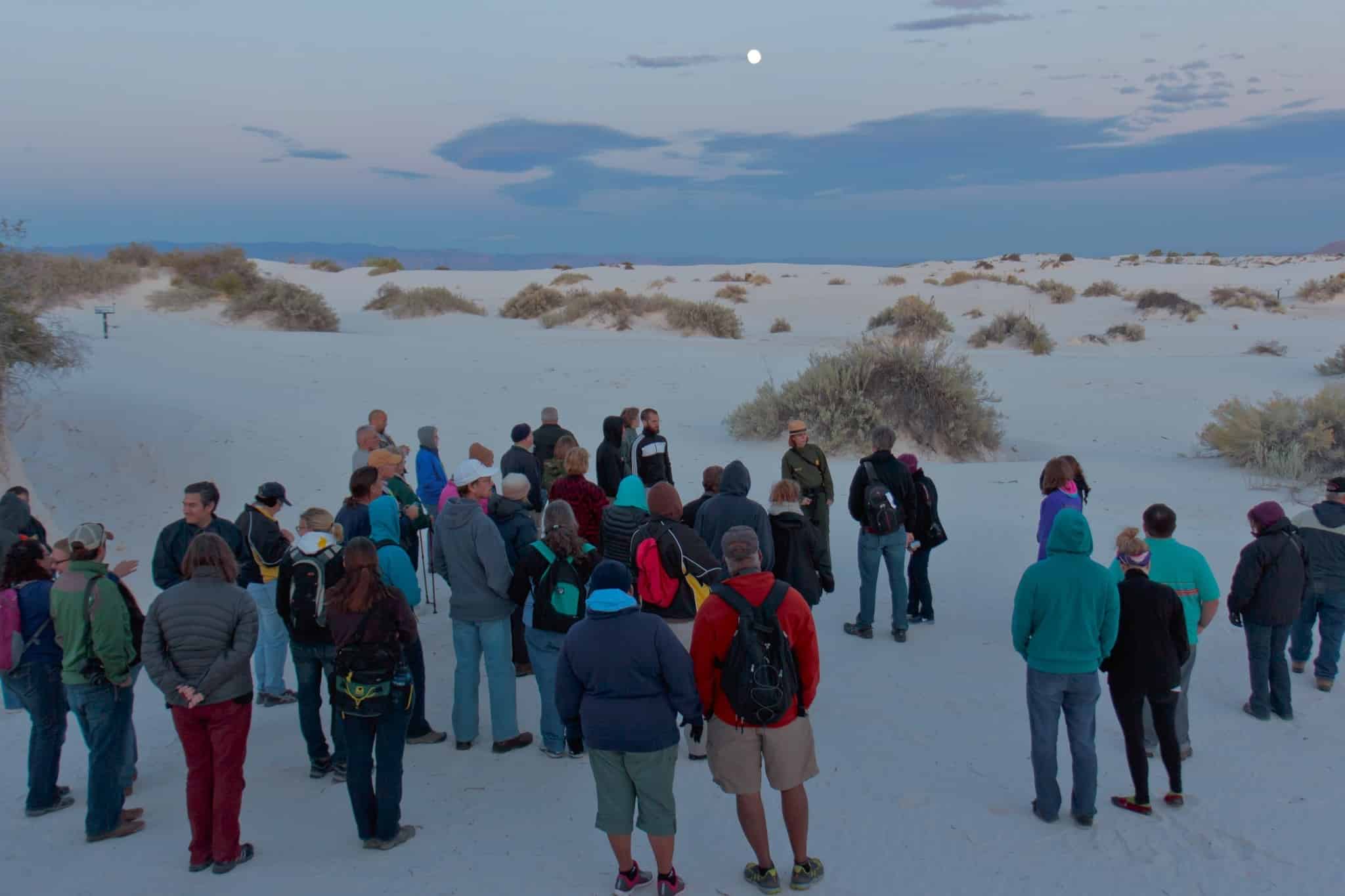White Sands National Park

About White Sands National Park
White Sands National Park: A Guide to the World’s Largest Gypsum Dunes
White Sands National Park, located in southern New Mexico within the Tularosa Basin, is home to the largest gypsum dunefield in the world. Spanning 275 square miles, it offers a unique environment for exploration and recreation. The park’s distinctive white dunes are a result of geological processes that have shaped this area over thousands of years.

Geography and Geology
The park is situated in the Tularosa Basin, bordered by the Sacramento Mountains. Its gypsum dunes are formed from mineral deposits left behind by ancient lakes. Unlike quartz-based sand, gypsum is water-soluble, but the arid climate of the basin prevents it from washing away. Wind continuously reshapes the dunes, creating an ever-changing landscape.
Park Overview
History and Designation
White Sands was originally designated as a national monument in 1933 and later became a national park in December 2019. Its location near the White Sands Missile Range has led to a unique relationship between conservation efforts and military activities.
Flora and Fauna
Despite its harsh environment, the park supports a variety of plant and animal life. Species like the soaptree yucca and bleached earless lizard have adapted to survive in the shifting sands. Several small mammals and insects have evolved lighter coloring to blend into their surroundings.

The park protects a diverse ecosystem, including rare species that have adapted to the harsh life of the gypsum sands, such as the bleached earless lizard. Vegetation is limited but uniquely adapted, with plants like the soaptree yucca anchoring the shifting sands. It is also home to several species of mice and other wildlife which have evolved to blend into the pale environment.
Visitor Information
The White Sands Visitor Center provides maps, exhibits, and resources to help visitors plan their trip. Entry fees are required, and visitors are encouraged to check weather conditions before arrival due to the park’s extreme temperatures and occasional closures related to missile testing.
Activities

Visitors enjoy a variety of activities: hiking the trails, joining the sunset stroll, or experiencing the Backcountry Camping Trail. Picnicking at designated picnic areas and capturing the breathtaking views on a scenic drive are popular ways to enjoy the park. Adventurous guests partake in sledding down the dunes for an added bit of fun.
Visitors can enjoy several activities at White Sands National Park:
- Hiking: Trails such as the Interdune Boardwalk and Alkali Flat Trail offer opportunities to explore the dunes.
- Sledding: Special sleds can be used to slide down the dunes.
- Photography: The white sands create unique photo opportunities, especially during sunrise and sunset.
- Ranger Programs: Guided tours and educational programs provide insight into the park’s history, ecology, and geology.
- Picnicking: Designated picnic areas are available for families and groups.
Planning Your Visit
The nearest city is Alamogordo, located about 15 miles northeast of the park. It offers accommodations, restaurants, and other services for visitors. When planning your trip:
- Bring water, sunscreen, and appropriate clothing for changing temperatures.
- Follow all park guidelines to ensure safety and preserve the natural environment.
- Check operating hours, as they vary by season.
Frequently Asked Questions
Visitors often have questions about White Sands National Park’s logistics, from hours of operation to the variety of activities offered. This section provides concise answers to these common inquiries.
What are the operating hours?
Operating hours vary by season. Visitors should check current hours on the park’s website before planning their visit.
Is there an entrance fee?
Yes, there is an entrance fee that supports maintenance and conservation efforts.
What is the weather like?
The park experiences hot summers with cooler evenings. Winters are mild but can bring frost to the dunes. High winds are common throughout the year.
What activities are available?
Visitors can hike, sled on the dunes, join ranger-led programs, or enjoy scenic drives through the park.
Where can I find accommodations?
Alamogordo is the closest city with hotels, restaurants, and other amenities.
White Sands National Park offers a one-of-a-kind experience for visitors interested in nature, geology, or outdoor recreation. By following park guidelines and planning ahead, you can enjoy everything this unique destination has to offer.


